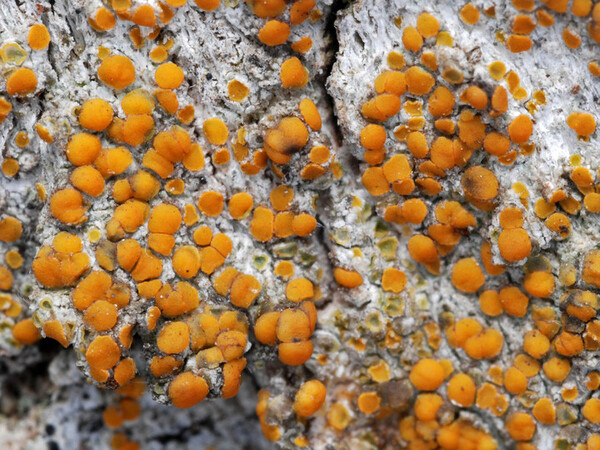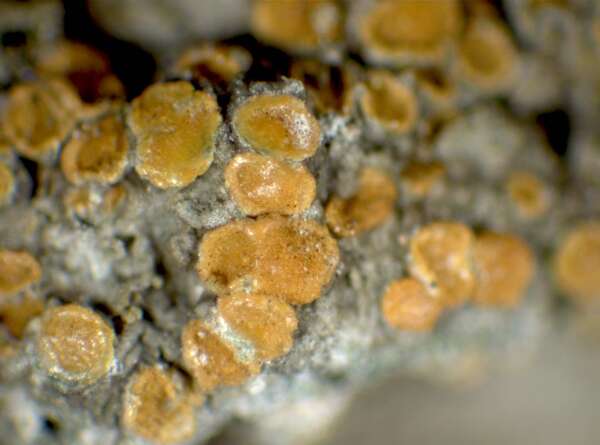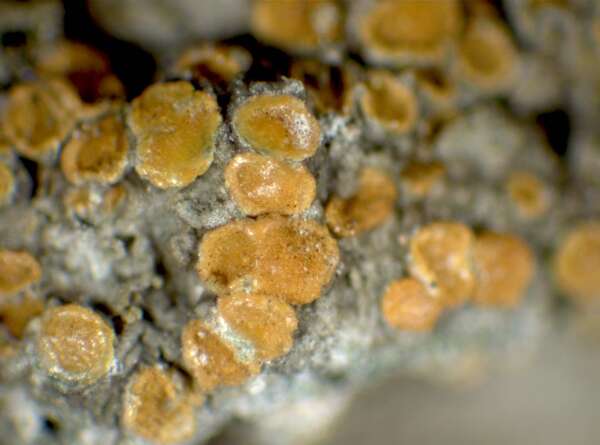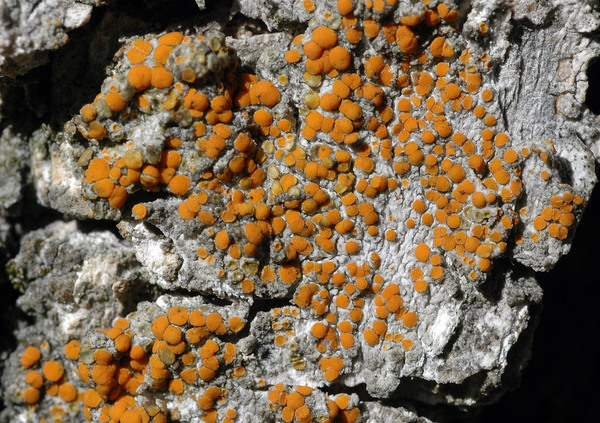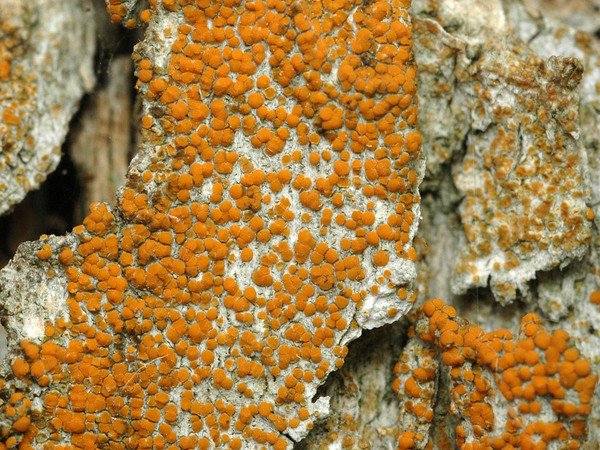Cerothallia luteoalba (Turner) Arup, Frödén & Søchting
in Arup & al., Nord. J. Bot., 31: 40, 2013. Basionym: Lichen luteoalbus Turner - Trans. Linn. Soc. London, 7: 92, 1803.
Synonyms: Biatorina luteoalba (Turner) Stein; Callopisma luteoalbum (Turner) A. Massal.; Caloplaca luteoalba (Turner) Th. Fr.; Caloplaca luteoalba var. persooniana (Ach.) H. Olivier; Candelariella luteoalba (Turner) Lettau; Gyalecta persooniana Ach.; Gyalolechia luteoalba (Turner) Arnold; Patellaria ulmicola DC.
Distribution: N - Ven, Lomb, Piem (Isocrono & al. 2004), Emil (Fariselli & al. 2020), Lig (Brunialti & Giordani 2003, Giordani & Incerti 2008). C - Tosc (Loppi & Frati 2006, Benesperi & al. 2013, Fačkovcová & al. 2024), Abr (Ravera & al. 2020b, Gheza & al. 2021), Mol (Garofalo & al. 1999, Caporale & al. 2008), Sar (Cossu 2013). S - Camp (Garofalo & al. 1999, Aprile & al. 2003b, Garofalo & al. 2010), Pugl (Nimis & Tretiach 1999), Bas, Cal (Puntillo 1995, 1996, Potenza & al. 2023), Si (Ottonello & al. 2011).
Description: Thallus crustose, grey-white, thin, continuous, ecorticate, becoming waxy and pruinose in the herbarium. Apothecia zeorine/biatorine, frequent, 0.3-0.5(-0.8) mm across, often crowded, round to slightly crenulate, first immersed, then sessile, with an initially concave, then mostly flat to finally convex, bright orange disc, a concolorous or slightly paler, finally excluded proper margin, and sometimes a poorly developed, whitish thalline margin enveloping the sides of young apothecia. Epithecium orange, K+ red; hymenium and hypothecium colourless; paraphyses sometimes branched in upper part, lax, the apical cells often swollen, to c. 4.5 μm wide. Asci 8-spored, clavate, functionally unitunicate, apically thickened with a broad internal beak, the inner part of apex and external cap I+ blue, Teloschistes-type. Ascospores 2-celled, polarilocular, hyaline, biseriate, ellipsoid, (7.5-)9-12(-14) x 3-6.5 μm, the equatorial thickening (“septum”) c. 1 μm (c. 1/8 of spore length). Pycnidia orange-red, often slightly erumpent. Conidia 3-4 x c. 1 μm, cylindrical with rounded ends, straight. Spot tests: thallus K-, C-, KC-, P-; apothecia K+ red. Chemistry: thallus without lichen substances; apothecia with parietin (major), fallacinal, emodin, teloschistin and parietinic acid (minor), corresponding with chemosyndrome A of Søchting (1997). Note: a mild-temperate lichen found on dust-covered bark, and in the wound tracks of injured, old trunks of deciduous trees, especially of Ulmus; more frequent in the past, now strongly declining and perhaps extinct in several parts of the country, especially in Northern Italy. Several old records reported by Nimis (1993: 176) can refer to Athallia pyracea; here mostly records accompanied by specification of spore characters are accepted. It is included in the Italian red list of epiphytic lichens as “Data Deficient” (Nascimbene & al. 2013c).
Growth form: Crustose
Substrata: bark
Photobiont: green algae other than Trentepohlia
Reproductive strategy: mainly sexual
Commonnes-rarity: (info)
Alpine belt: absent
Subalpine belt: absent
Oromediterranean belt: absent
Montane belt: absent
Submediterranean belt: extremely rare
Padanian area: absent
Humid submediterranean belt: extremely rare
Humid mediterranean belt: absent
Dry mediterranean belt: absent

Predictive model
Herbarium samples
Growth form: Crustose
Substrata: bark
Photobiont: green algae other than Trentepohlia
Reproductive strategy: mainly sexual
Commonnes-rarity: (info)
Alpine belt: absent
Subalpine belt: absent
Oromediterranean belt: absent
Montane belt: absent
Submediterranean belt: extremely rare
Padanian area: absent
Humid submediterranean belt: extremely rare
Humid mediterranean belt: absent
Dry mediterranean belt: absent

Predictive model
| Herbarium samples |
 INDEX FUNGORUM
INDEX FUNGORUM
 GBIF
GBIF
 DOLICHENS
DOLICHENS
